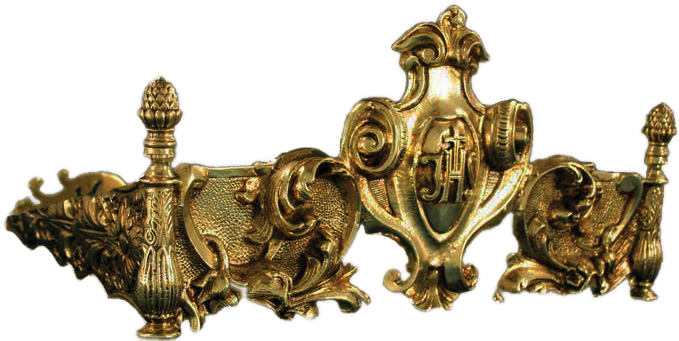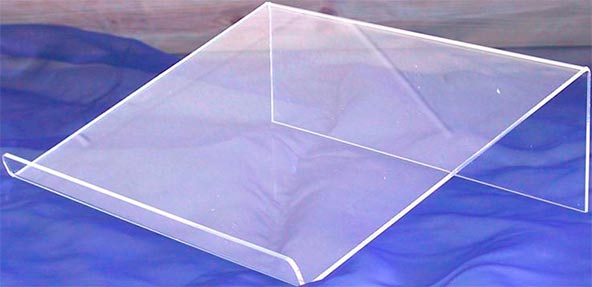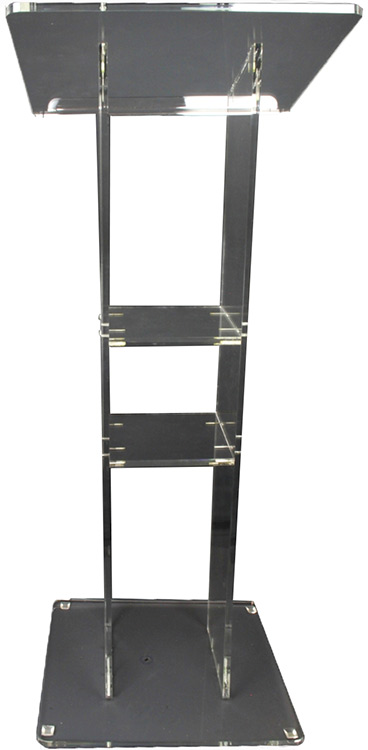
Church Lecterns
Catholic Church lecterns
Lecterns are elements of religious furniture that we use daily in our churches. Music stands have been important items for many centuries. There is evidence of the presence of lecterns in parish altars since the fifteenth century.
In today's post we will try to delve into the origin and functionality of lecterns. The objective sought is to analyze the historical evolution of the term "Lectern" in comparison with the word ambo and pulpit.
Three terms, lectern, lectern and pulpit , which over the centuries have come together. Today, popularly, they are often used almost interchangeably. Especially the concepts of ambo and pulpit.
The lectern in the Church , definition
The concept of lectern is very broad. According to what we can read in the Dictionary of the Real Academia España, it is considered a lectern:
“Furniture in the form of an inclined plane, with or without a foot, used to hold books, sheet music, etc., and read more comfortably.”
In other words, it will be a church lectern, any element of the liturgical furniture on which the Missals are placed. Taking this definition as a starting point, the evolution and popular fusion of the words lectern, pulpit and ambo is better understood.
The main difference between the lectern and the lectern or the pulpit is that the lectern is a mobile element. It can be placed in different positions depending on the needs of the celebration, the number of priests, etc... In many churches and parishes, due to lack of space, the lectern performs the functions of a pulpit or ambo.
Lecterns in the altars of the churches, history
According to most studies, the first lecterns can be located inside the churches around the fifteenth century. It is known that in earlier times Missal was placed on a cushion or held by the priest's assistants.
 At the end of the Middle Ages, the use of lecterns in churches began to become widespread. Most of the music stands used were tabletop altar lectern. They used to be located on the altar table. The lecterns were made of walnut wood. Tree widely used by the nobles and the clergy throughout the Middle Ages.
At the end of the Middle Ages, the use of lecterns in churches began to become widespread. Most of the music stands used were tabletop altar lectern. They used to be located on the altar table. The lecterns were made of walnut wood. Tree widely used by the nobles and the clergy throughout the Middle Ages.
Walnut lecterns were prized for their durability, beautiful color, and ease of carving . These attributes allowed the artisans to develop their art without limitations, creating lecterns with impressive liturgical reliefs.
In some churches you could find two lecterns, even two lecterns, placed one on each side of the altar (this distribution can still be seen today). The first lectern , located on the left side, facing the altar from the front, was used to read parts of the Gospels . Read about the life and work of Our Lord Jesus Christ collected in the four Gospels written by Saint Mark, Saint John the Evangelist, Saint Jucas and Saint Matthew. The lecterns used to read the Gospels on numerous occasions were decorated with some of the symbols of the evangelists : The angel (symbol of Saint Matthew), the lion (symbol of Saint Mark), the ox (symbol of Saint Luke) or/and the Eagle (symbol of Saint John the Evangelist). The eagle symbol was the most popular. Church lecterns decorated with eagles could often be seen. The most common were bronze lecterns with the eagle with open wings. The Gospels rested on the back of the eagle.
The second lectern was located on the right side of the altar (facing the altar from the front). The right side is known as the epistle side. It receives this name because the lectern located there used to be used to read the epistle during the Holy Mass .
Lecterns are still commonly used in our churches. They are elements that facilitate reading for the priests during the Holy Mass. Sometimes we can find the lecterns, especially the standing lecterns, decorated with colored cloths of the liturgical season to which the celebration corresponds.
Types of lecterns in the Church
Liturgical lecterns can be classified into three types: table lecterns, standing lecterns , and lecterns.
Table lecterns for Church
 Lectern model designed to be used on a table. In most cases, this type of religious lectern is placed on the altar table . In this way they are close to the priest during the celebration of Mass.
Lectern model designed to be used on a table. In most cases, this type of religious lectern is placed on the altar table . In this way they are close to the priest during the celebration of Mass.
Within the wide variety of styles and materials that exist in table lecterns, we find two parts that are common to all liturgical table lecterns: The base and the support for the texts.
The base of the church lecterns can include small legs, wheels or some type of protection to avoid damaging the altar table. It can be made of all kinds of materials and usually matches the part where the texts are placed.
The support for the texts is usually an inclined surface with a stop at the bottom that prevents the books from falling. It is common for them to have different degrees of inclination. Some lecterns, the support area rotates 360 degrees.
The table lecterns can be decorated with all kinds of religious elements: JHS, symbols of the evangelists, etc...
Standing Lecterns for Church
 Standing lecterns usually fulfill the same functions as table lecterns but do not require any other piece of furniture to be used. Standing religious lecterns are the ones that have been most used historically instead of pulpits and lecterns.
Standing lecterns usually fulfill the same functions as table lecterns but do not require any other piece of furniture to be used. Standing religious lecterns are the ones that have been most used historically instead of pulpits and lecterns.
This type of liturgical lecterns are usually decorated with lectern cloths. The lectern cloths can be embroidered with liturgical elements and usually vary in color depending on the time of the liturgical year in which we find ourselves. The lectern cloths fulfill an aesthetic and symbolic function.
Standing church lecterns have a part that tabletop lecterns do not. In addition to the base and the support for the texts, the standing lecterns have a central body that joins the base with the support. This central part, generally in the shape of a tube, is usually made of the same materials as the base and support. The central body of the standing lecterns, in addition to an aesthetic component (it is usually decorated), has a very relevant function, that of adjusting the height of the lectern . It is very important that the standing lecterns can be raised or lowered to adapt to the height of the priest or person who is going to use them.
lectern lectern
Large lectern that reached great diffusion during the Middle and Modern Ages. It is a type of lectern that is usually made up of four sides and that used to be used by choirs during the Church.
It is currently hardly used.
Lecterns for churches, materials
The lecterns used for religious work are made of all kinds of materials. Historically, noble materials have always been used due to the important function they perform: oak wood lecterns, gold lecterns, silver lecterns, wooden lecterns with gold leaf coating, bronze lecterns , etc…
From the end of the 19th century, with the revolution in materials produced in laboratories, the materials used in the manufacture of music stands have varied considerably. Lecterns have been added to this new trend, both standing and tabletop. Although wrought iron lecterns, bronze lecterns, wooden lecterns, … are still the most purchased, lecterns made with new materials are gradually finding their place.
Within the lecterns made with new materials, the ones that are being sold the most are those popularly known as methacrylate lecterns, acrylic lecterns, PMMA lecterns or plexiglass lecterns.
Acrylic Lecterns - Acrylic Pulpits
Acrylic lecterns , also known as methacrylate lecterns, are one of the pieces of furniture for the Church that are having the best acceptance. Acrylic lecterns, in many places called acrylic pulpits or acrylic pulpits , offer their buyers a number of advantages over lecterns made of other materials. 
Acrylic lecterns, advantages
- They have great resistance. Acrylic lecterns are very difficult to break or scratch unlike glass lecterns.
- They have a shiny surface and a transparency that can reach 93%. The acrylic lecterns are easily combinable with the rest of the furniture elements of the altar.
- The methacrylate lecterns are very light . They can be moved very easily. But they can also be anchored to the ground to remain fixed in an area of the church.
- They are not toxic. Its manufacture is very respectful with the environment.
- It is very easy to keep acrylic music stands clean . Just passing a damp cloth periodically is enough. They are also very resistant to ultraviolet rays so they turn yellow.
- The standing lecterns made of methacrylate are very stable.
- Easily assembled.